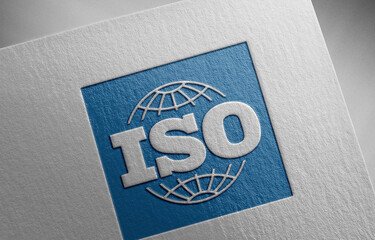ISO (the International Organization for Standardization) and IEC (the International Electrotechnical Commission) form the specialized system for worldwide standardization. National bodies that are members of ISO or IEC participate in the development of International Standards through technical committees established by the respective organization to deal with particular fields of technical activity. ISO and IEC technical committees collaborate in fields of mutual interest. Other international organizations, governmental and non-governmental, in liaison with ISO and IEC, also take part in the work. In the field of information technology, ISO and IEC have established a joint technical committee, ISO/IEC JTC 1.
International Standards are drafted in accordance with the rules given in the ISO/IEC Directives, Part 2.
The main task of the joint technical committee is to prepare International Standards. Draft International Standards adopted by the joint technical committee are circulated to national bodies for voting. Publication as an International Standard requires approval by at least 75 % of the national bodies casting a vote.
Attention is drawn to the possibility that some of the elements of this document may be the subject of patent rights. ISO and IEC shall not be held responsible for identifying any or all such patent rights.
ISO/IEC 27001 was prepared by Joint Technical Committee ISO/IEC JTC 1, Information technology, Subcommittee SC 27, IT Security techniques.
This second edition cancels and replaces the first edition (ISO/IEC 27001:2005), which has been technically revised.
Introduction
0.1 General
This International Standard has been prepared to provide requirements for establishing, implementing, maintaining and continually improving an information security management system. The adoption of an information security management system is a strategic decision for an organization. The establishment and implementation of an organization’s information security management system is influenced by the organization’s needs and objectives, security requirements, the organizational processes used and the size and structure of the organization. All of these influencing factors are expected to change over time.
The information security management system preserves the confidentiality, integrity and availability of information by applying a risk management process and gives confidence to interested parties that risks are adequately managed.
It is important that the information security management system is part of and integrated with the organization’s processes and overall management structure and that information security is considered in the design of processes, information systems, and controls. It is expected that an information security management system implementation will be scaled in accordance with the needs of the organization.
This International Standard can be used by internal and external parties to assess the organization’s ability to meet the organization’s own information security requirements.
The order in which requirements are presented in this International Standard does not reflect their importance or imply the order in which they are to be implemented. The list items are enumerated for reference purpose only.
ISO/IEC 27000 describes the overview and the vocabulary of information security management systems, referencing the information security management system family of standards (including ISO/IEC 27003[2], ISO/IEC 27004[3] and ISO/IEC 27005[4]), with related terms and definitions.
0.2 Compatibility with other management system standards
This International Standard applies the high-level structure, identical sub-clause titles, identical text, common terms, and core definitions defined in Annex SL of ISO/IEC Directives, Part 1, Consolidated ISO Supplement, and therefore maintains compatibility with other management system standards that have adopted the Annex SL.
This common approach defined in the Annex SL will be useful for those organizations that choose to operate a single management system that meets the requirements of two or more management system standards.
Scope
This International Standard specifies the requirements for establishing, implementing, maintaining and continually improving an information security management system within the context of the organization. This International Standard also includes requirements for the assessment and treatment of information security risks tailored to the needs of the organization. The requirements set out in this International Standard are generic and are intended to be applicable to all organizations, regardless of type, size or nature. Excluding any of the requirements specified in Clauses 4 to 10 is not acceptable when an organization claims conformity to this International Standard.




